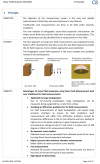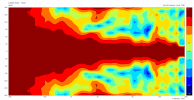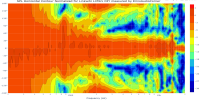beagleman
Major Contributor
I have heard a few, and while they do "Seem" to offer a few key advantages or seem at least interesting sounding in some ways.....
I have found those that tend to champion them, are very defensive about them in general, and tend to skim over the disadvantages and often are not even totally aware of some of the downsides. Similar to how some Vinyl guys will skirt around built in issues with vinyl records.
When I mentioned "Baffle Peaking" on another forum, I got mostly crickets and told I was making up stuff or just bashing their baby speakers.
The guys that said they were experts on OB speakers seemed blissfully unaware this was even a well known issue.
(Baffle peaking is when the sound meets from front and back and is in phase and creates a 6db boost in the sound, usually between say 200-400 hz or thereabouts)
There is also a cancellation frequency where sound from front to back cancel each other out and result in a reduction of most all bass, as frequency goes lower and lower.
Most make up for this with Drivers with a VERY high Q factor, that partially boost bass at least at the mid and upper bass frequencies.
I have found those that tend to champion them, are very defensive about them in general, and tend to skim over the disadvantages and often are not even totally aware of some of the downsides. Similar to how some Vinyl guys will skirt around built in issues with vinyl records.
When I mentioned "Baffle Peaking" on another forum, I got mostly crickets and told I was making up stuff or just bashing their baby speakers.
The guys that said they were experts on OB speakers seemed blissfully unaware this was even a well known issue.
(Baffle peaking is when the sound meets from front and back and is in phase and creates a 6db boost in the sound, usually between say 200-400 hz or thereabouts)
There is also a cancellation frequency where sound from front to back cancel each other out and result in a reduction of most all bass, as frequency goes lower and lower.
Most make up for this with Drivers with a VERY high Q factor, that partially boost bass at least at the mid and upper bass frequencies.





